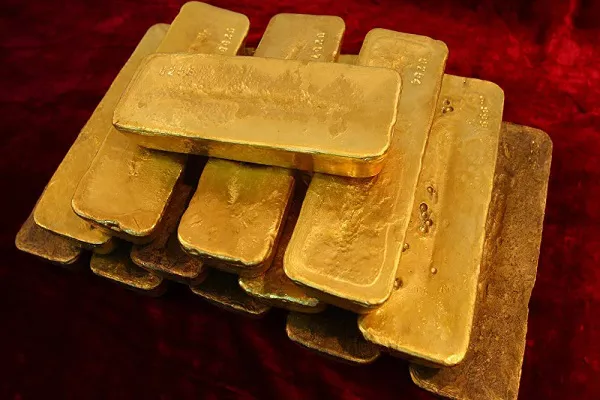Gold prices saw a dip on Monday, retreating from their recent highs as traders engaged in profit-taking following a strong rally last week. Spot gold fell by 1% to $2,686.73 per ounce at 11:47 GMT, after experiencing a sharper drop of 2% earlier in the session. Similarly, U.S. gold futures decreased by 0.9%, settling at $2,688.40. This pullback came after the precious metal hit its highest level since November 6 during early trading in Asia, buoyed by its best weekly performance in nearly two years.
Profit-Taking and Market Sentiment Weigh on Gold
The price retreat can be attributed to two key factors, according to Giovanni Staunovo, an analyst at UBS. First, there is profit-taking following last week’s rally, which saw gold surge in value. The rally itself was driven by a variety of factors, including concerns about global economic risks and geopolitical uncertainties. However, as prices hit new highs, investors took advantage of the gains, prompting the current pullback.
Secondly, the market was impacted by the nomination of Scott Bessent as the next U.S. Treasury Secretary. Some market participants view Bessent’s nomination as positive for market stability, interpreting his appointment as a potential signal for less aggressive trade policies, particularly regarding the ongoing trade war between the U.S. and its trading partners. Bessent is seen as someone with a strong understanding of financial markets, and his potential to reduce the likelihood of severe tariffs on U.S. trade partners has helped alleviate some concerns that had previously bolstered gold prices.
Gold is traditionally viewed as a safe-haven asset during times of economic and political instability. Therefore, a less confrontational stance from the U.S. government regarding trade could reduce the demand for gold, which thrives when investors seek shelter from uncertainty.
Focus on U.S. Economic Data and Federal Reserve’s Upcoming Decisions
While profit-taking and the new Treasury Secretary’s nomination are exerting downward pressure on gold, traders are also looking ahead to several important economic events in the coming days. This week, market participants are closely watching for the release of the Federal Reserve’s November FOMC meeting minutes, as well as key economic data, including the first revision of third-quarter GDP figures and core personal consumption expenditures (PCE) data.
The Federal Reserve’s actions on interest rates continue to be a primary driver of gold prices, with markets anticipating a rate cut at the Fed’s upcoming meeting on December 18. According to Frank Watson, a market analyst at Kinesis Money, the general expectation is for a 25 basis point rate cut, although recent trading activity suggests that traders have scaled back their bets on this outcome. As of now, traders are assigning a 56% probability to another rate cut in December, according to the CME FedWatch tool.
The Impact of Federal Reserve’s Dot Plot on Gold
Even with a rate cut expected in December, the more critical factor for markets will be the guidance from the Federal Reserve regarding future interest rate cuts. Giovanni Staunovo pointed out that traders are keenly awaiting the “dot plots” from the Fed, which provide projections on future interest rate changes. If the dot plots signal fewer rate cuts next year, it could dampen investor enthusiasm for gold, which tends to benefit from lower interest rates. Conversely, any indication that the Fed may maintain a dovish stance on rates could provide additional support for the precious metal.
Weakness Across Other Precious Metals
Gold wasn’t the only precious metal to face a decline on Monday. Silver, which often moves in tandem with gold, saw a more significant drop, falling 1.6% to $30.81 per ounce. Meanwhile, platinum and palladium also experienced losses. Platinum fell by 1.1% to $952.81 per ounce, while palladium saw a smaller decrease of 0.8%, trading at $1,001.70 per ounce.
These declines in precious metals reflect a broader trend of profit-taking in the wake of strong rallies, as well as the shifting market dynamics influenced by economic data and geopolitical factors.
Outlook for Gold and Precious Metals
Looking ahead, gold’s price trajectory will be largely influenced by a combination of economic data, central bank policy decisions, and broader market sentiment. If the Federal Reserve signals a more cautious approach to interest rate cuts in the coming months, gold could face additional headwinds, particularly if trade tensions continue to ease under the leadership of Scott Bessent. On the other hand, if economic risks persist and the Fed continues to maintain an accommodative policy stance, gold could find support at current levels, with potential for further price gains.
For now, investors will continue to monitor the economic calendar closely, with a focus on the Fed’s actions and any developments in U.S. trade policy. As the year winds down, the outlook for gold and other precious metals remains uncertain, with potential for both short-term volatility and long-term opportunities depending on how these factors unfold.
Related topics:

